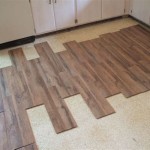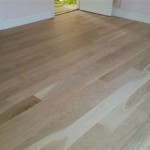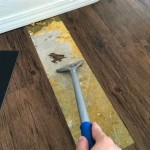How to Properly Acclimate Bamboo Flooring: A Comprehensive Guide
Acclimating bamboo flooring before installation is a crucial step that ensures a durable and long-lasting floor. Proper acclimation allows the flooring to adjust to the temperature and humidity levels of its intended installation environment, minimizing the risk of expansion and contraction issues that can lead to buckling or gaps.
Why is Acclimation Important?
Bamboo, like all wood products, is hygroscopic, meaning that it absorbs and releases moisture from the surrounding environment. When bamboo flooring is installed without proper acclimation, it may absorb moisture from the subfloor or the air, causing it to expand and buckle. Conversely, if it loses moisture, it may shrink and create gaps between planks.
How to Acclimate Bamboo Flooring
The acclimation process involves storing unopened boxes of bamboo flooring in the intended installation space for a specified period, allowing it to reach equilibrium with the ambient temperature and humidity.
1. Determine the Acclimation Period
The acclimation period varies depending on the thickness of the flooring and the difference between the environmental conditions at the storage location and the installation site. Typically, the following guidelines apply:
- 1/2" thick flooring: 7 days
- 3/4" thick flooring: 14 days
2. Choose the Storage Location
Store the unopened boxes of flooring in the room where it will be installed. The area should be well-ventilated, dry, and at a temperature between 60-80°F (16-27°C) with a relative humidity between 30-50%. Avoid storing the flooring in basements, garages, or attics where conditions may fluctuate.
3. Stack the Boxes Properly
Stack the unopened boxes flat on the floor, with spaces between them to allow for airflow. Do not stack the boxes more than 3 feet high. Use spacers or pallets to ensure ventilation.
4. Monitor Conditions
Throughout the acclimation period, monitor the temperature and humidity in the storage area using a hygrometer. Adjust heating or cooling systems as necessary to maintain optimal conditions.
5. Check for Moisture
Before installing the flooring, check for moisture using a moisture meter. The moisture content of the bamboo should be within 2-4% of the equilibrium moisture content of the installation environment.
Conclusion
Proper acclimation of bamboo flooring is essential to ensure a successful installation. By following these steps, you can minimize the risk of expansion or contraction issues and enjoy a durable and beautiful bamboo floor for years to come.

New Flooring Acclimation Overview

Hardwood Floor Acclimation How Long To Wait Before Installation

Does Bamboo Flooring Need To Acclimate Before Installation

Maintaining Bamboo Floors Best Practices Singapore Flooring

5 Challenges Installers May Face With Bamboo Flooring

New Flooring Acclimation Overview

Bamboo Flooring

A Guide To Acclimating Your Hardwood Floors Aa

Why To Accilmate Wood Flooring Before Installation Builddirect

Natural Engineered Bamboo Flooring Design Architecture
Related Posts








